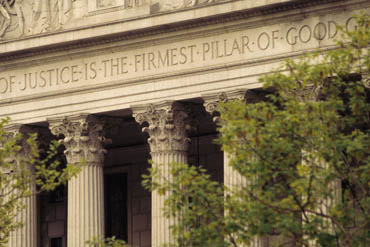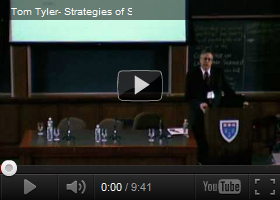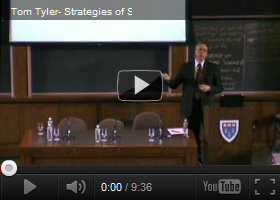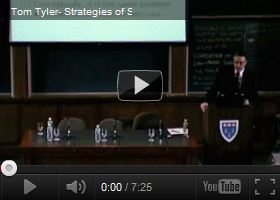
The theory behind procedural fairness, or procedural justice as it is sometimes called, has developed over a period of more than 25 years. Tom Tyler, one of the key figures in the field of procedural fairness, provides a concise overview for members of the court community in his article "Procedural Justice and the Courts."
In a recent lecture, Professor Tyler further explores and highlights the implications of procedural fairness on several aspects of the justice system.
Judges Kevin Burke and Steve Leben authored an extensive white paper on procedural fairness entitled, "Procedural Fairness: A Key Ingredient in Public Satisfaction." The paper examines core research in the area and recommends various changes to "improve" the daily work of the courts and their judges. Click here to access the spanish version of the paper.
In a December 2011 presentation to the Conference of State Court Administrators, Judge Kevin Burke presented an overview of procedural fairness and its practical applications. A copy of the powerpoint from his presentation can be found here.
Other scholars have explored the connection between procedural fairness and other areas of research. The article Fair Procedures, Yes. But We Dare Not Lose Sight of Fair Outcomes by Brian Bornstein and Hannah Dietrich discusses procedural justice and its interrelation with distributive justice. Similarly, Jonathan Jackson discusses procedural justice as an important aspect of criminology's definition of legitimate authority in his chapter, On the Dual Motivational Force of Legitimate Authority. Jackson and Jacinta Gau further explore and differentiate between the concepts of trust and legitimacy in public perceptions of legal authority in their article, Carving Concepts? Differentiating Between Trust and Legitimacy in Public Attitudes Towards Legal Authority.
An Argument for Procedural Fairness
Professor Tom Tyler's presentation to a 2007 Harvard Law School Conference focuses on how legitimacy, which is rooted in procedural justice, is important in decisions to adhere to social rules. The presentation is broken into three parts below:



